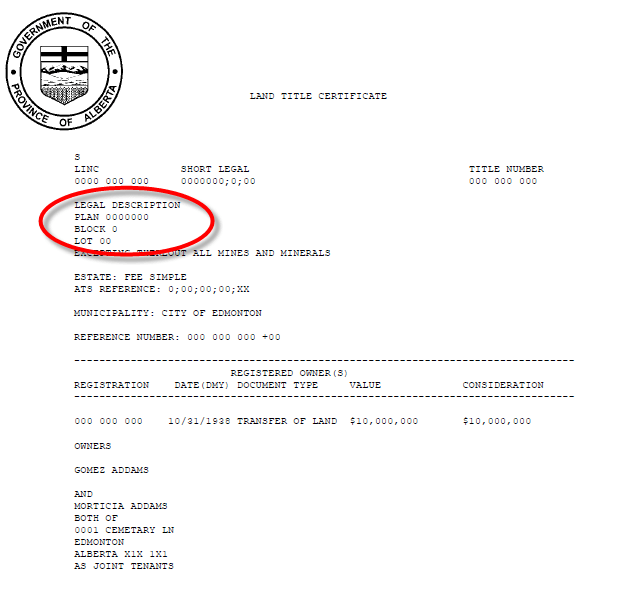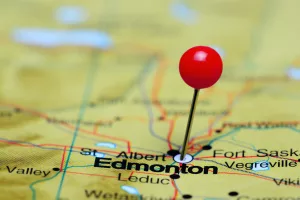What is a Legal Land Description?
In Alberta, every property has a legal description that describes what and where a property is.
Legal descriptions in cities consist of three pieces of information: a plan number, a lot number and a block number.

Rural legal descriptions (at least in the prairie provinces) consist of coordinates that show the location of the property. Rural descriptions are based on a grid system called the Dominion Land Survey that was used to divide up the provinces of Alberta, Saskatchewan and Manitoba.
Real Estate Agent Explains Legal Descriptions
Legal descriptions are used to look up property or titles, and locate and identify real property.
An example of how a legal description would look for a fictional property in Edmonton would be something like this:
[box_light]Plan 12345A, Block 8, Lot 35[/box_light]
Here and example of the location and format of the long legal on a fictional Alberta land title:

Sometimes legal descriptions are written as “lot, block and plan,” and other times they are written “plan, block, lot.” Either arrangement is OK as long as each item is labelled. In short legal descriptions, the plan is always first because there are no labels for each number.
(Looking up a legal description for Edmonton real estate is easy – check out my tutorial How To Find a Property’s Legal Description to learn more)
Why Does It Matter?
Every contract that has to do with real estate needs to have the legal description of the property listed. An address is not definitive enough to identify a property – it is used primarily for mailing and delivery purposes and does not have the same legal ramifications. Also, you need either a legal description, title number or LINC number to look up a property in the Alberta Land Titles System.

